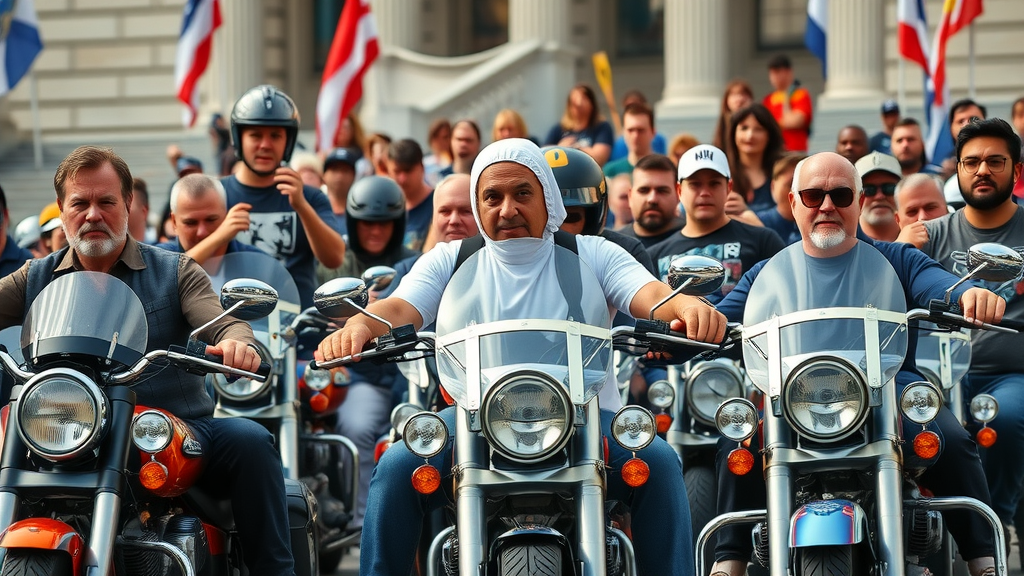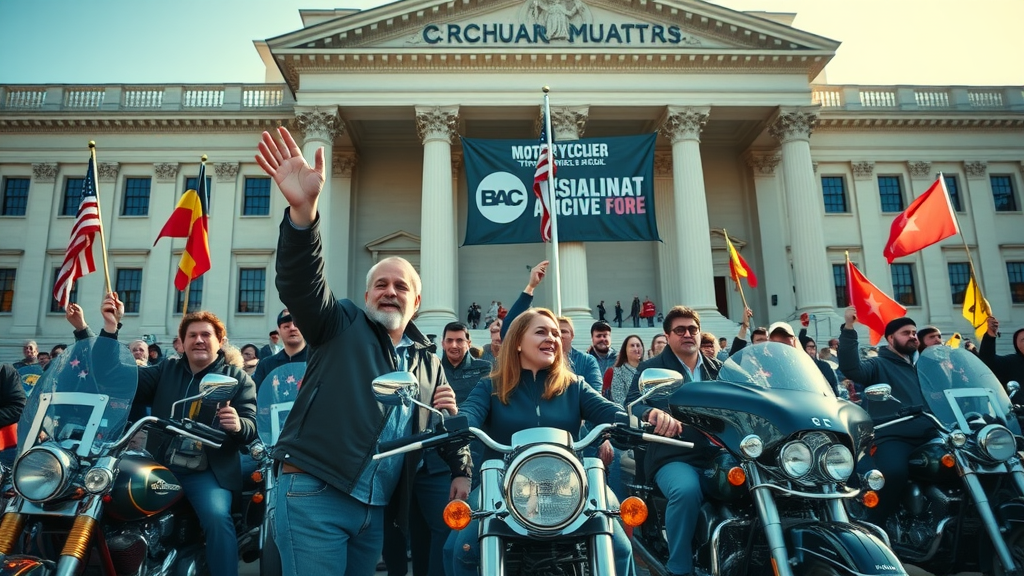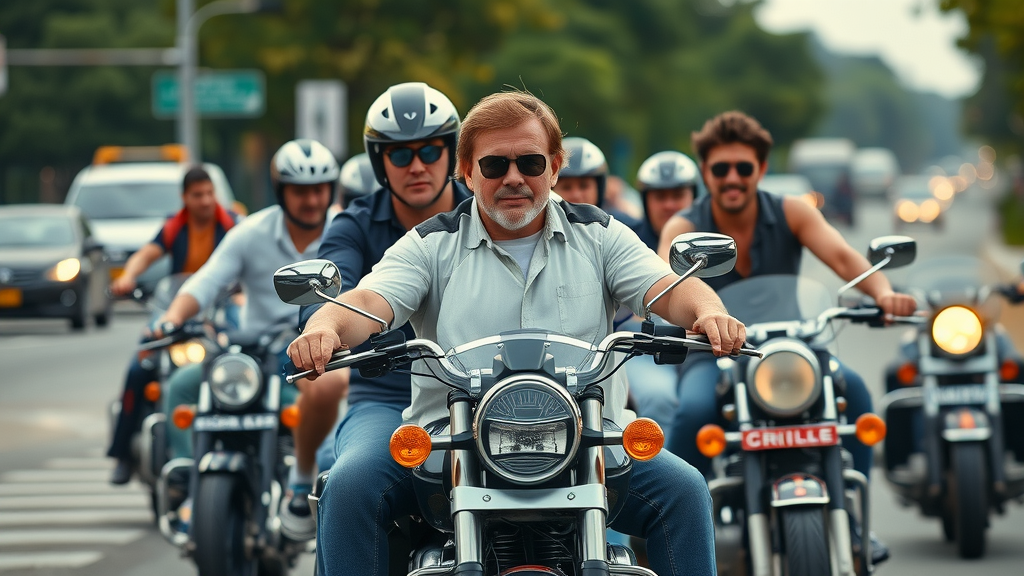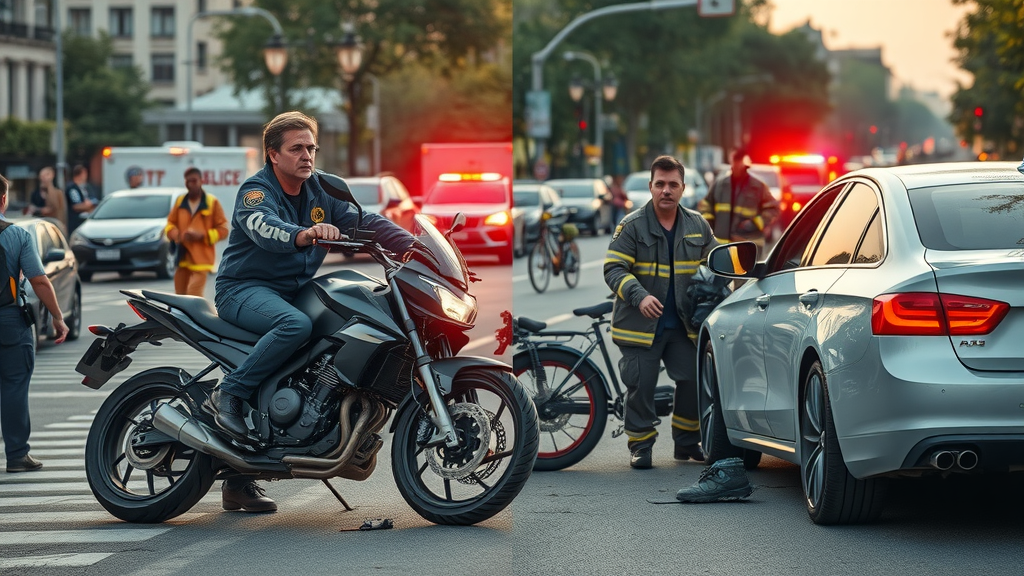Did you know that over 8 million Americans identify as motorcycle riders, yet their interests are frequently overlooked when new laws are drafted? Motorcycle rights advocacy isn’t just about chrome, horsepower, or the love of the open road—it's about standing up for freedom, personal choice, and safety. Whether you’re a seasoned rider, a weekend warrior, or someone thinking about buying their first bike, understanding the power and necessity of advocacy is key to protecting your rights and shaping the future of motorcycle culture across the United States.

Why Motorcycle Rights Advocacy Matters: The Fight for Freedom and Fairness
“Did you know that over 8 million Americans identify as motorcycle riders, yet legislation often passes without their voices being heard?”
Motorcycle rights advocacy is the organized effort to ensure that motorcycle riders’ concerns, freedoms, and unique road needs are represented fairly in law and public perception. Every time a helmet law, emission standard, or road regulation is debated in the state capitol, advocates are fighting to ensure that these rules reflect reality, not just the opinions of non-riders. Without vocal, coordinated advocacy groups, policies can easily overlook the needs—or outright restrict the freedoms—of motorcyclists.
Grassroots advocacy means riders have a seat at the table when decisions are made that affect motorcycle safety , insurance rates, and even who gets blamed when a motorcycle accident occurs. State and national organizations, including regional ABATE chapters and the Motorcycle Riders Foundation , strive for fairness by lobbying lawmakers, leading public awareness campaigns, and uniting local riders. In today’s regulatory climate, protecting the rights and safety of all motorcycle riders remains a continuous and evolving challenge—and that’s why motorcycle rights advocacy matters now more than ever.
How Motorcycle Advocacy Impacts Every Motorcycle Rider
Whether you ride daily for commuting or occasionally for recreation, the outcomes of motorcycle advocacy affect every aspect of your experience. When advocacy groups successfully push for “ Share the Road ” campaigns, drivers are more aware and respectful—potentially reducing motorcycle crashes. Advocacy shapes helmet laws and insurance regulations, challenges discriminatory insurance rates, and ensures fair roadside treatment from law enforcement. For groups like the Motorcycle Riders Foundation or your local ABATE organization , the ultimate goal is preserving the joy of riding while minimizing unnecessary risks and restrictions.
Community-driven efforts frequently lead to state legislation allowing voluntary helmet use, investing in rider education, or promoting realistic exhaust standards. Even if you never personally attend a legislative hearing or rally, your freedom to choose your safety gear, customize your bike, or receive fair treatment in a traffic stop is the direct result of ongoing advocacy. By supporting rights organizations , all motorcycle riders benefit from a collective voice that never tires in the defense of the open road.
The Evolution of Motorcycle Advocacy Groups and Rights Organizations
- Origins of major motorcycle advocacy groups: Early organizations formed in response to laws and stereotypes threatening the motorcycling community.
- Role of the motorcycle riders foundation in representing state motorcyclists: The Motorcycle Riders Foundation coordinates national campaigns and supports local efforts.
- How rights organizations protect rider interests across the states: By monitoring proposed legislation, holding rallies, and educating both riders and policymakers.
- State motorcyclists and regional advocacy group influence: State-level groups, especially ABATE chapters, build direct relationships with lawmakers.

Key Players: State Motorcyclists, Riders Foundation, and National Motorcycle Advocacy
The Motorcycle Riders Foundation and ABATE (American Bikers Aimed Toward Education) organizations form the backbone of American motorcycle rights advocacy. These groups started as small, regional efforts but grew in response to restrictive helmet laws and unfair regulations. Today, they coordinate thousands of motorcyclists and have a direct line to the halls of power at both state and federal levels.
State motorcyclists and the advocacy groups that represent them are essential in shaping policy. From the local motorcycle club to the national riders foundation , collaboration is what makes real legislative change possible. Each tier, from the local chapter to the national board, advocates for motorcycle safety , fair licensing requirements, and equitable insurance rates with a deep understanding of the unique risks and rewards of the ride.
Without these grassroots movements and their national partners, the voice of the average motorcycle rider would be lost. As more riders unite behind causes like the reform of motorcycle helmet laws or the implementation of motorcycle-specific road safety features, the influence—and necessity—of advocacy groups becomes clearer than ever.
Helmet Law Controversies: Arguments for and Against Motorcycle Riders’ Choice
| Argument | Proponents | Opponents | Real-World Impact |
|---|---|---|---|
| Mandatory helmet laws | Public health orgs, some lawmakers | Advocacy groups, some motorcycle riders | Reduced head injuries, but disputed effect on personal rights |
| Freedom of choice | Rights organizations, state motorcyclists | Safety advocates | Greater rider satisfaction, variable safety statistics |

Helmet Laws: Perspectives from Motorcycle Riders and Advocacy Groups
Helmet law debates remain among the most contentious issues in motorcycle rights advocacy. Many state legislatures and public health organizations argue that mandatory helmet laws save lives and reduce healthcare costs. Yet, advocacy groups maintain that informed adults should have the right to decide what’s best for their own safety. For them, freedom of choice is a fundamental principle—a stance reflected by major organizations like ABATE and the Motorcycle Riders Foundation.
In practical terms, state motorcycle rider groups point out that helmet laws have mixed results when it comes to actual safety improvements. While some studies highlight reduced head injuries, critics argue that mandatory helmet laws do little to improve overall accident statistics and unfairly penalize responsible riders. Many advocacy groups instead promote strong safety education and voluntary helmet use as better solutions that respect rider autonomy.
The ongoing helmet law debate highlights the need for accurate data, respectful dialogue, and proactive engagement by all riders in advocacy efforts. As new laws are proposed, only a united front amongst motorcycle riders can ensure that any compromises reached will still guarantee the rights and safety of everyone on two wheels.
Motorcycle Safety Initiatives: The Role of Advocacy Groups in Shaping Policy
- Promoting safer road designs for motorcycle riders: Campaigning for improved signage, repair of potholes, and motorcycle-friendly intersections.
- Supporting motorcycle rider education programs: Expanding access to high-quality education through safety foundation and abate organizations.
- Collaborating with lawmakers on traffic safety legislation: Creating fair and effective rules that acknowledge the unique needs of motorcycles.
- Lobbying for fair treatment after motorcycle crashes: Ensuring accident victims receive proper care and unbiased investigations.
“State motorcyclists have led the charge on motorcycle crash prevention and recovery policies that put riders first.”

Modern motorcycle safety programs owe much of their existence to the dedicated work of advocacy groups. The Motorcycle Safety Foundation and state-level ABATE organizations are instrumental in educating new riders, sharing best practices, and inspiring ongoing training among seasoned motorcyclists. They also advocate for “Share the Road” initiatives to improve public awareness of motorcycles, which has a proven impact on reducing motorcycle crashes.
By working directly with lawmakers, rights organizations influence policy proposals that make highways and local streets safer for everyone. This means supporting legislation requiring better surface repairs, safer guardrails, and clear road markings, all tailored to the realities of motorcycle riding . Additionally, after a motorcycle accident, advocacy group representatives offer support, ensuring riders receive fair legal and medical treatment—not just blame.
These initiatives aren’t just beneficial for riders; they enhance the safety landscape for all road users, reinforcing the importance of continued support for motorcycle advocacy at every level.
Current Challenges Facing Motorcycle Advocacy and Rights Organizations
Today’s advocacy groups face new hurdles, including constantly shifting regulations, technological advancements in vehicles, and persistent misconceptions about motorcycle riders. As state motor vehicle laws change, organizations must fight harder for fair insurance policies and combat proposals that could restrict motorcycle access to certain roads or increase licensing requirements.
Stereotypes, such as those perpetuated by the media, affect political decision-making and can result in punitive measures against all riders. Moreover, organizations must continually prove the value of self-governing rider safety initiatives vs. mandatory government intervention. Only by adapting, diversifying, and uniting new generations of motorcycle riders can advocacy remain effective in overcoming these challenges.
Collaboration across abate chapters , the riders foundation , and independent advocacy groups is pivotal for staying ahead of regulatory trends and preserving the rights and freedoms at the heart of motorcycle culture.
Changing State Motor Laws and the Pushback from Motorcycle Riders
From emissions standards to distracted driving laws, evolving traffic regulations can sometimes have unintended—and unfair—impacts on motorcycle riders. Recent changes to state licensing procedures or noise ordinances are often introduced with little rider input. Motorcycle advocacy groups work tirelessly to ensure that state motorcyclists can respond quickly and effectively to these proposals with organized, evidence-based feedback.
Pushback from riders is a sign of healthy civic engagement, and advocacy groups empower communities to participate fully in the legislative process. From letter-writing campaigns to legislative rallies, organized resistance has led to the defeat of overly restrictive laws and the introduction of more nuanced, effective regulations that actually improve rider safety and fairness.
The willingness and ability of state-level organizations to mobilize their members—sometimes in a matter of days—illustrates the crucial role advocacy plays in protecting rights at a local level.
Joining Forces: How Motorcycle Advocacy Groups Empower Riders and Influence Policy
- Strength in numbers: the benefits of joining a rights organization.
- How state motorcyclist groups collaborate on legislative campaigns.
- Success stories: Recent policy wins led by motorcycle advocacy groups.
“When motorcycle riders unite, their collective voice can influence even the most powerful lawmakers.”

The power of numbers and unity cannot be overstated in motorcycle rights advocacy. Joining a reputable advocacy group gives individual riders the resources, knowledge, and support they need to stand up for their beliefs. Local and national groups coordinate large-scale letter-writing campaigns, lobby days at the capitol, and public demonstrations, all designed to maintain pressure on lawmakers and ensure the voices of motorcycle riders are heard.
State motorcyclist coalitions like ABATE chapters build enduring relationships with state legislators by providing reliable, first-hand perspectives on how laws affect riders in practice. They also partner with national organizations like the Motorcycle Riders Foundation to amplify their message and exchange successful strategies. These alliances have achieved major victories, such as protecting the right to modify motorcycles, pushing back on blanket helmet laws, and promoting “Share the Road” education.
By building on shared experiences and aspirations, motorcycle advocacy groups enable riders everywhere to safeguard their rights, improve public safety, and celebrate their passion both on and off the road.
People Also Ask About Motorcycle Rights Advocacy
What is the 1% rule on motorcycles?
The "1% rule" in motorcycling historically refers to the small portion of riders considered "outlaws" or outside mainstream society—a label originating from a statement made by the American Motorcyclist Association decades ago that "99% of motorcyclists are law-abiding citizens." It’s important to know that most motorcycle advocacy groups and rights organizations work tirelessly to promote positive public awareness and dispel lingering stereotypes. The overwhelming majority of motorcycle riders are committed to safety, legality, and community.
In the context of motorcycle rights advocacy , the 1% myth has often been used to unfairly paint all riders with the same brush, influencing public perception and even legislation. Advocacy aims to separate fact from fiction, emphasizing that the modern riding community is diverse, responsible, and deserving of a fair voice in policy.
Explaining the Origins and Myths Surrounding the 1% Rule in Motorcycle Advocacy
The origins of the 1% rule can be traced to the aftermath of chaotic incidents at motorcycle rallies in the mid-20th century, which the media dramatized. Rights organizations, including ABATE and the Motorcycle Riders Foundation, work hard not only to fight legal battles but to change narratives around motorcycle riders. Advocates focus on promoting community engagement, sharing positive stories, and actively participating in charity work to foster a more accurate public image.

What is the 4 second rule for motorcycles?
The "4 second rule" is an essential motorcycle safety guideline recommending that riders maintain a four-second following distance behind vehicles. This rule helps ensure enough space to safely stop or react to sudden hazards, reducing the risk of a motorcycle crash. Rider education programs continually teach and emphasize this practice as a foundation for responsible motorcycle riding.
The 4 Second Rule: Ensuring Motorcycle Safety through Advocacy and Education
Advocacy groups, such as the Motorcycle Safety Foundation and various ABATE organizations, reinforce the 4 second rule through class curriculums, public service announcements, and printed safety materials. They lobby for state licensing exams to require knowledge and practical demonstration of this safety rule, ensuring that every new rider is equipped with life-saving habits. The ongoing emphasis on the 4 second rule reflects the broader mission of advocacy: empowering riders with tools and awareness to protect themselves.
What charities are involved in motorcycle riding?
Many national and local motorcycle rights advocacy groups organize charitable events supporting veterans, children’s health, community food banks, and victims of motorcycle crashes. The largest examples include Ride for Kids , Toys for Tots rides hosted by the Marine Corps, and events sponsored by ABATE and other rights organizations.
Charitable Contributions of Motorcycle Riders and Advocacy Groups
Motorcycle clubs and rights organizations collect and deliver tens of thousands of dollars annually to charitable causes. Beyond donations, they provide critical support in the wake of disasters or community crises, further shifting public perception in a positive direction. This spirit of giving is integral to motorcycle advocacy—demonstrating that civic responsibility and fellowship are core values for most riders.
Are cops allowed to pull over motorcycles?
Law enforcement officers are permitted to stop motorcycles, just like any other motor vehicle, if they have reasonable suspicion of a violation. Advocacy groups, however, monitor law enforcement practices and address concerns about profiling or unfair handling of riders. They offer legal guidance, educate members on their rights, and work with policymakers to promote professional and respectful policing.
Understanding Law Enforcement and Motorcycle Rights Advocacy
Motorcycle rights advocacy goes beyond legislation, addressing the interactions between riders and police. Advocacy groups encourage transparency, collect data on profiling incidents, and participate in training programs to foster mutual respect between riders and officers. As a result, states with active advocacy organizations often see improved relations and reduced conflict between motorcycle riders and law enforcement.
Frequently Asked Questions on Motorcycle Rights Advocacy and How to Get Involved
- How can I join a state motorcyclist rights organization? Most states have ABATE chapters or similar groups dedicated to rights advocacy. Check their websites, attend a meeting, or reach out on social media to become a member and start making a difference today.
- What is the difference between national and state-level motorcycle advocacy groups? National groups like the Motorcycle Riders Foundation lobby on federal policy, organize nationwide campaigns, and support state groups. State and local chapters focus on laws and issues specific to their region, building relationships with local lawmakers.
- How do advocacy groups fight for motorcycle safety? By promoting rider education, “Share the Road” campaigns, and legislative efforts for better road designs. They also advocate for fair accident investigation procedures and access to quality safety equipment.
- What role do riders foundations play in protecting rights? Riders foundations provide resources, organize grassroots campaigns, lead public awareness, and represent rider interests in legislative hearings—amplifying the impact of every individual motorcyclist’s voice.
Key Perspectives and Action Steps for Motorcycle Riders
- Support your local motorcycle advocacy group
- Participate in state motorcyclist events and meetings
- Share your story to raise awareness of riders’ rights
- Stay updated on changing helmet laws and state legislation
Make Your Voice Heard: Take Action in Motorcycle Rights Advocacy Today
Get involved now—your participation shapes the future of motorcycle riding. Join local and national advocacy groups, attend meetings and events, and help protect the freedom and safety of riders everywhere!
Motorcycle rights advocacy is crucial for protecting riders’ freedoms and ensuring their voices are heard in legislative processes. Organizations like the American Motorcyclist Association (AMA) play a pivotal role in this effort. The AMA’s Rights Resources page offers tools such as bill tracking, a government action center, and a state laws database, empowering riders to stay informed and actively participate in defending their rights. ( americanmotorcyclist.com )
Additionally, the World Association of Motorcycle Riders (WAMRi) focuses on global advocacy, emphasizing road safety, legal protections, and financial opportunities for motorcyclists. Their mission is to create a worldwide community where riders are recognized, respected, and supported. ( wamriders.org )
By engaging with these organizations, riders can access valuable resources and join a collective effort to safeguard the future of motorcycling.
 Add Row
Add Row  Add
Add 




Write A Comment